Welcome to the Dangerous Goods Occurrence Reporting (DGOR) guidance page. It is designed to help you understand what information to include in your DGOR submission and reduce uncertainty when completing your report.
We will continue to update this guidance as we identify areas where further clarification or support is needed.
Details of the Occurrence
Use the information in this section to provide your account of the occurrence on the Occurrence Details page in the DGOR webform.
Description of the Occurrence
Use the following guidelines to give us your personal account of the occurrence:
- How the incident occurred
- How it was found (example: during x ray screening, freight checks, upon unloading, etc.)
- The reason for the occurrence (missing label, improper packaging, etc.)
- Any action taken as a result of the occurrence (consignment held, disposed, shipper contacted, etc.)
Use the check boxes on the Occurrence Details page to highlight common product, handling and packaging related issues.
You may choose any and all that apply to your occurrence. If none of them apply, you are not required to select any.
Dangerous Goods Details
This section covers the details of the dangerous goods you are required to submit in relation to the items applicable to your occurrence report and instructions on how to use the form.
Adding a new Dangerous Goods item
- Click on the “Add” button to add a new Dangerous Goods item
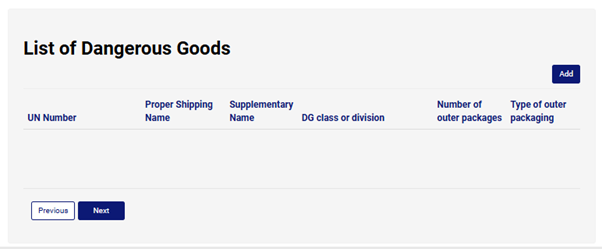
Figure 1: Dangerous Goods Tab: List of Dangerous Goods section - In the pop-up window, click on the magnifying glass icon under Proper Shipping Name field to search for any UN number or Proper Shipping Name
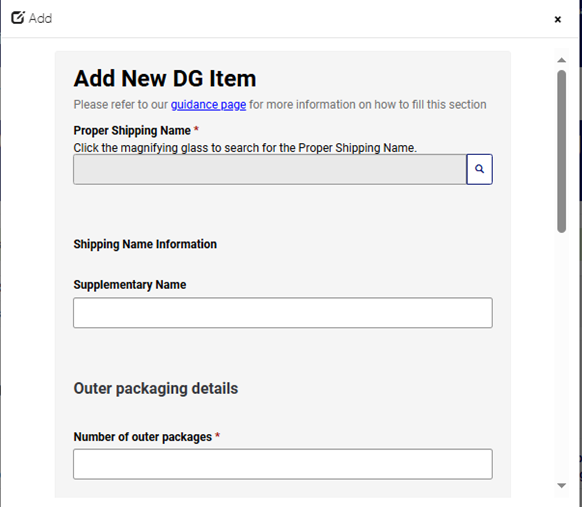
Figure 2: Add a Dangerous Goods Item pop-up window
- The system will lookup the dangerous goods proper shipping name and UN number associated with your search query
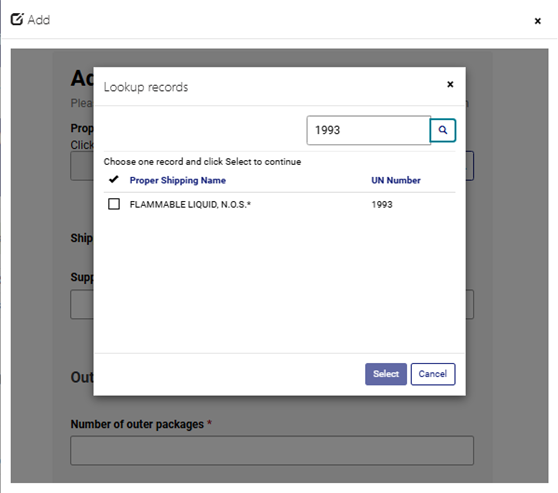
Figure 3: Lookup Dangerous Goods using UN Numbers and Proper Shipping Name
Example Dangerous Goods details search and selection
We will use the following example to explain how to fill Dangerous Goods Details
UN Number: UN 1993
Proper Shipping Name: FLAMMABLE LIQUID, N.O.S.*
You will notice that when “1993” is used as a search query, the system pulls up “FLAMMABLE LIQUID, N.O.S.*” – the associated Proper Shipping Name. Please click on the check box beside the Proper Shipping Name and press the Select button to continue.
Once selected, the system will automatically populate the associated DG Class and division, Sub risks automatically so you don’t have look for them in the Dangerous Goods Technical Instructions. - Proper Shipping Names assigned with an asterisk (*) in the Dangerous Goods List (Table 3 -1) must be supplemented with the technical (chemical) name.
Please use the Supplementary Name field to fill in the relevant technical (chemical) name.
Examples: Flammable Liquid N.O.S. (Xylene) or Corrosive Liquid, Flammable, N.O.S (Sodium Hydroxide, Toluene)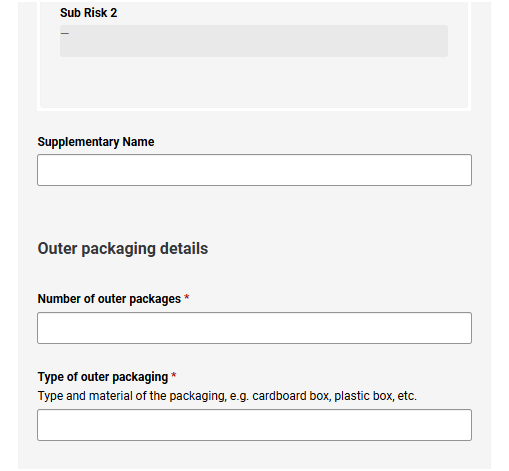
Figure 4: Dangerous Goods Details - The Number of Outer Packages field refers to the number of UN Standard packages that the individual inner receptacles are packed into.
Please refer to the illustrations below and the following example on how to assess your dangerous goods consignment in order to fill this section.
Figure 5: UN Standard Outer Packaging with Inner receptacles (open)
Figure 6: UN Standard Outer Packaging with Inner receptacles
Example: If your consignment has 10 of such boxes, they are made of fibreboard, each containing 4 bottles of dangerous goods items, then you would fill the following in the Outer Packaging fields:
Number of Outer Packages = 10
Type of Outer Packaging = Fibreboard boxes
For more information on types of recognised outer packaging please refer to ICAO Technical Instructions Part 6, Chapter 1.3, Table 6-2 for an Index of Packages other than Inner Packagings (Edition 2025-2026) - Inner Packaging refers to the packaging material used to package the Dangerous Goods items individually.
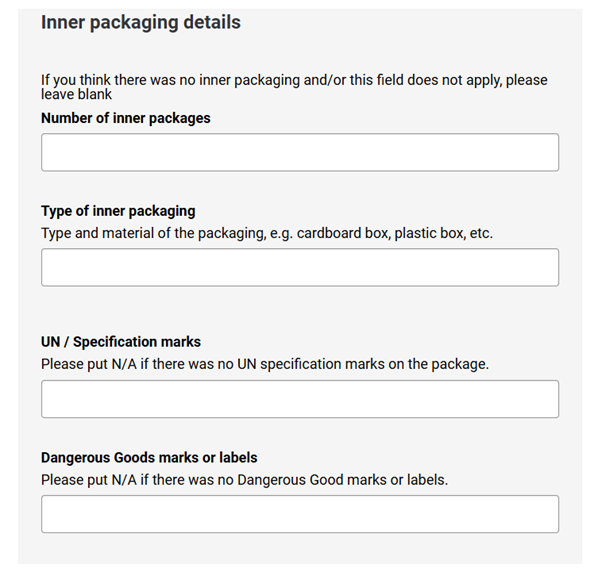
Figure 7: Dangerous Goods inner packaging, marks and labels - Number of Inner Packages refers to the number of individually packed Dangerous Goods items inside the outer packaging.
For more information on types of recognised outer packaging please refer to ICAO Technical Instructions Part 6, Chapter 1.3, Table 6-3 for an Index of Inner Packagings (Edition 2025-2026)
In our example above, if the UN1993 FLAMMABLE LIQUID, N.O.S.* substances are packaged in plastic bottles, with 4 plastic bottles each in the 10 Fibreboard Outer packaging boxes, then the total number of inner packages would be 10 x 4 = 40.
Consequently, the consignment would be described as:
10 x Fibreboard box containing 40 plastic bottles - ICAO Technical Instructions Part 6, Chapter 6.3 and Chapter 6.4 describe the code and markings for packagings intended for the transport of Dangerous Goods. While reporting, if you notice any of the following on the outer packaging of the consignment in question, please specify it in the UN / Specification Marks field:
United Nations (UN) packaging symbol
The text beside the UN packaging symbol that is printed on the outer packaging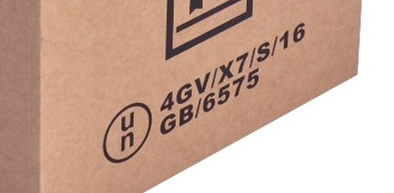
- Dangerous Goods marks or labels field refers to any dangerous goods marking or labels on the outer packaging. Please review CAP1162: Dangerous goods guidance for more information.
Common Documents in Air Transport Shipments
This section provides information on the most common documents used in Air Transport shipments.
Master Air Waybill (MAWB)
A Master Air Waybill is the primary transport document issued by an air carrier (or their agent) to the freight forwarder, evidencing the contract of carriage between the shipper and the operator for one or more consolidated shipments. It is pre-printed with the operator’s name and prefix code, signed by the operator or their agent, and is subject to the Warsaw/Montreal Conventions and IATA rules.
It provides a summary of all House Air Waybills (HAWBs) under that consolidation, listing the number of pieces, weights and nature of goods for the flight. It serves both as a receipt of goods and the contract of carriage from airport to airport.
House Air Waybill (HAWB)
A House Air Waybill is issued by a freight forwarder (or consolidator) to its shipper, evidencing the contract of carriage between those two parties only. It is typically prepared on a neutral Air Waybill form and signed by the forwarder in its own name, not that of the carrier.
Unlike the Master Air Waybill (MAWB), the House Air Waybill (HAWB) does not establish a direct contractual relationship with the carrier; it details the individual shipper’s consignment within a larger master shipment and reflects the forwarder’s own conditions of carriage.
Dangerous Goods Transport Document (DGTD)
The Dangerous Goods Transport Document (DGTD) is required by ICAO TI Part 5.4.1 for any consignment containing dangerous goods. It accompanies the air waybill and provides a separate, detailed description of each DG package, including proper shipping name, UN number, class/division, packing group, quantity and packing instruction references.
Its purpose is to ensure that, in the event screening, handling or emergency response is needed, the contents of DG packages can be unambiguously identified without referring back to the Air Waybill itself.
The Dangerous Goods transport Document may also be referred to as the Dangerous Goods declaration (DGD), Dangerous Goods Note (DGN) or Shipper’s Declaration for Dangerous Goods.

Figure 8: IATA Shipper's Declaration Sample
News from UK Civil Aviation Authority
- Experts appointed by regulator to strengthen economic regulation and support growth
- UK Civil Aviation Authority and Ministry of Defence join forces to build pathway into civil aviation for military personnel
- Regulator’s accessibility assistance report highlights progress made by most UK airports but finds three airports need improvement

